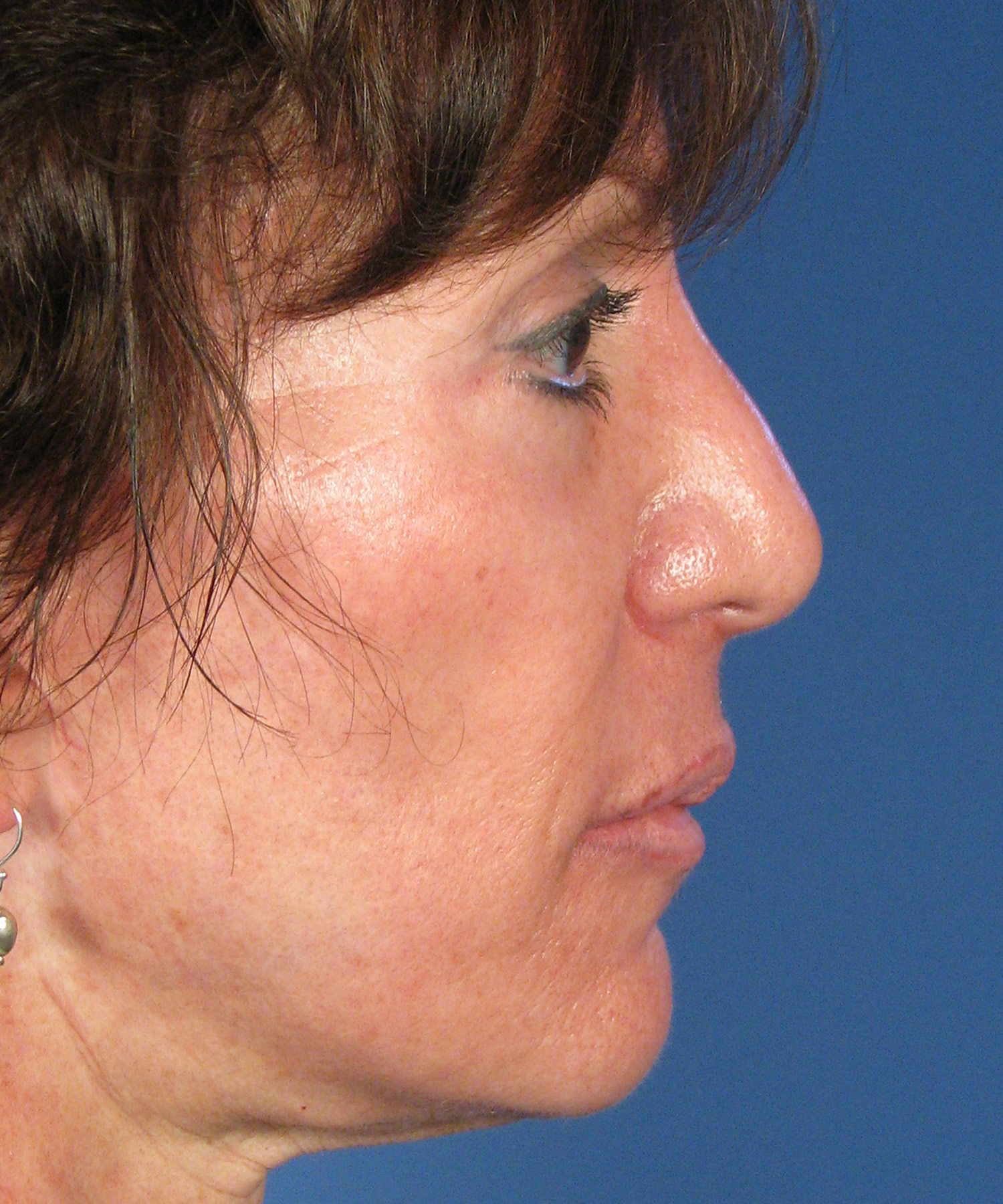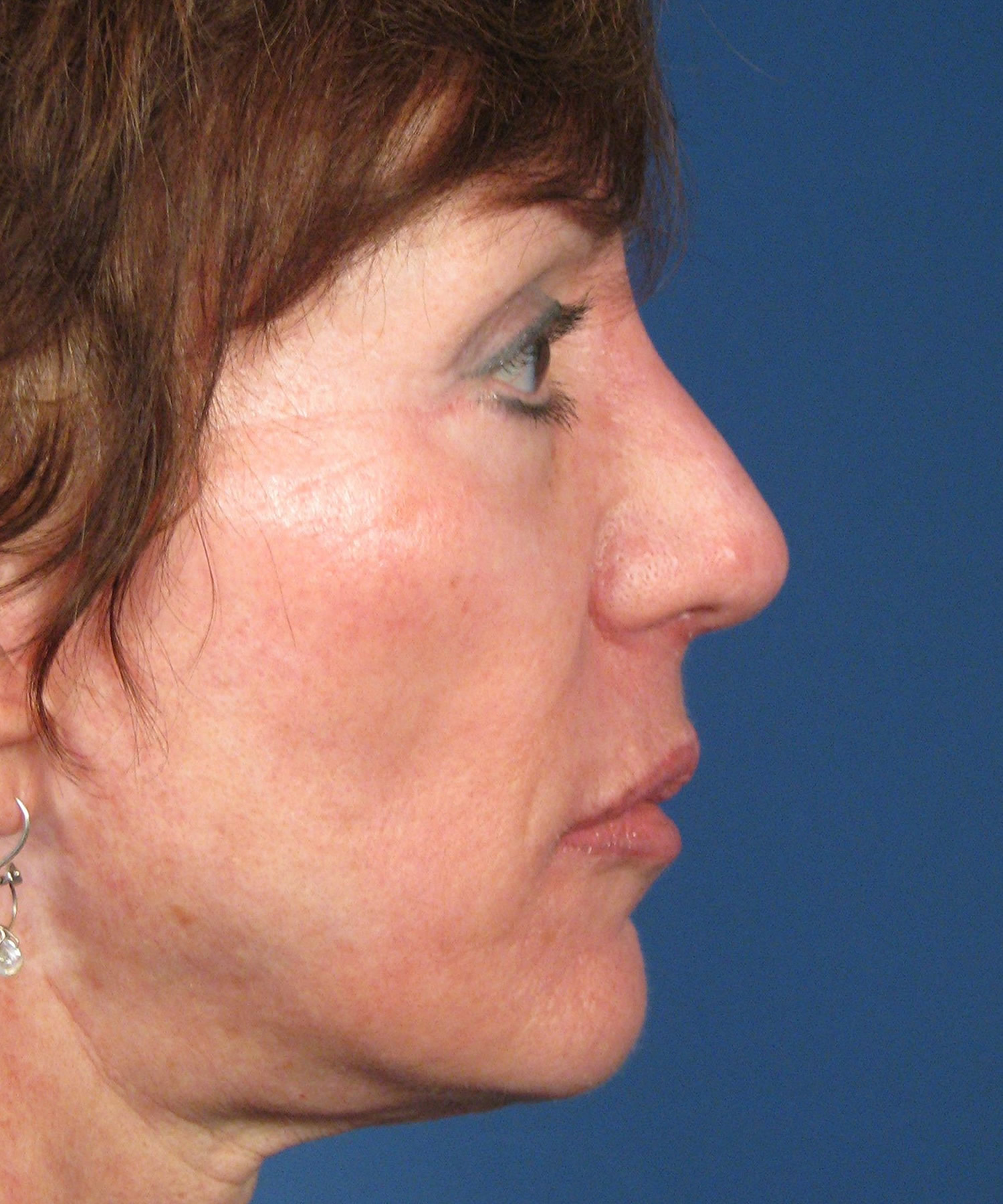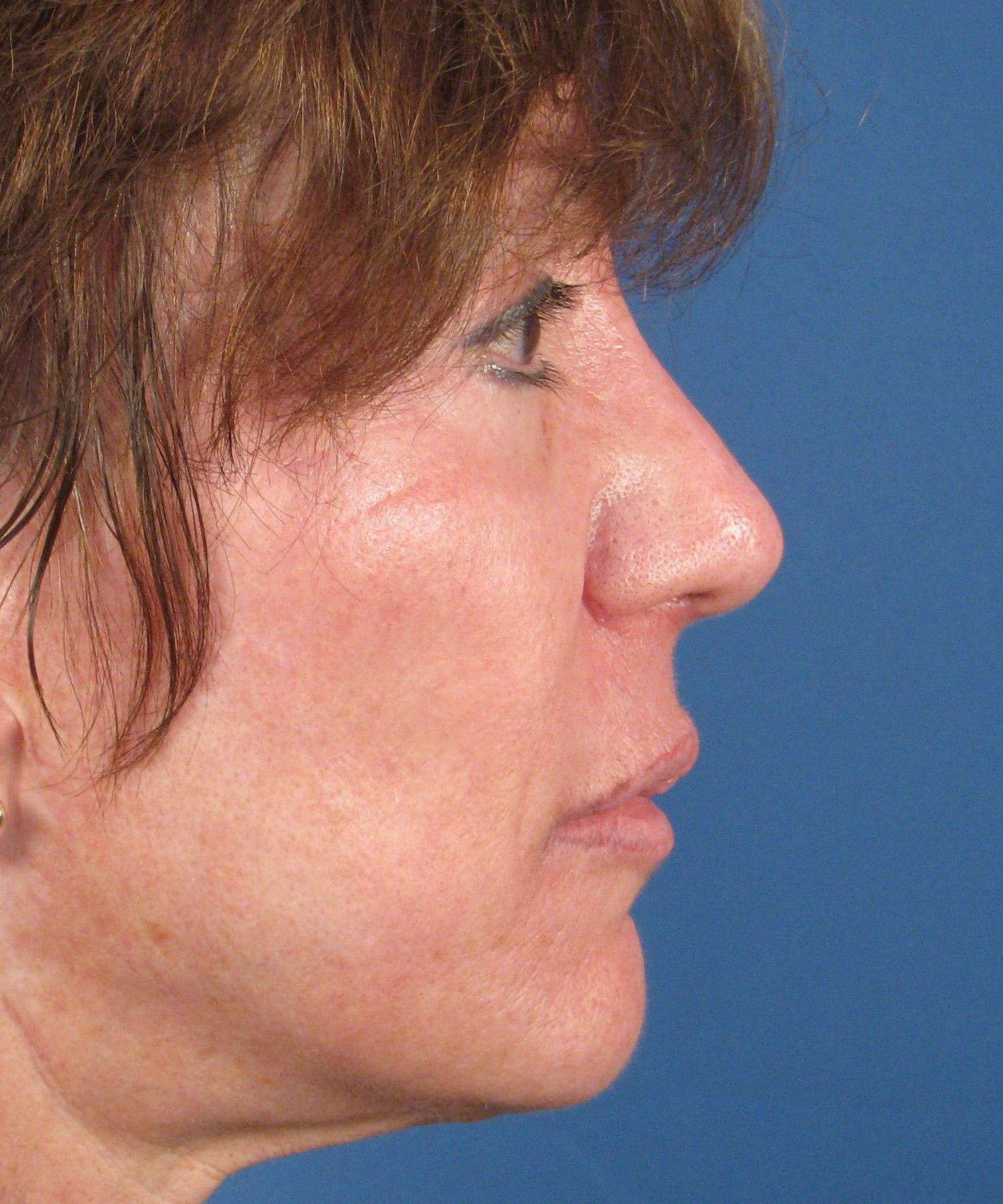One of my revision rhinoplasty patients from San Diego was seen in follow-up evaluation today, which reminded me to post a quick note on thick skinned patients undergoing revision rhinoplasty. This particular patient had undergone three previous rhinoplasty surgeries performed by three different plastic surgeons. Her main issue was a lack of definition along the bridge and tip as well as a persistent bump seen on her lateral view. Her last plastic surgeon told her they had reached the maximum amount of bridge and tip definition possible due to her having extremely thick skin. The last plastic surgeon was also unsure her bridge skin would shrink wrap down following further reduction of the bridge height. During her revision rhinoplasty consult, we had a very long discussion regarding her skin, which truly was one of the thickest soft tissue coverings I had seen in a long time. In fact, this was probably the main reason she had not achieved the type of definition she desired following three prior rhinoplasty surgeries. Over one year ago I performed her revision open rhinoplasty procedure. I utilized an ear graft in order to recreate a new nasal tip that would project into her thick skin to create the desired definition. At the same time, I reduced the bridge height and thinned her skin over the bridge to promote better ‘shrink wrapping’ following surgery. As she went through the healing process, I followed her quite closely as we do all our rhinoplasty patients. Within several months we began instituting steroid (Kenalog) injections to help further thin out her skin and encourage more definition to be seen along the bridge and tip. Contrary to popular belief among rhinoplasty patients and surgeons, steroids can be used months to years out to help further shape a nose. But it does take knowledge of the proper type and amount of steroid to use. In this particular case, we injected her at intervals of 8-10 weeks. In the attached photos, you can see the progression of her healing. The first photo shows her preoperative profile image. Her bridge has a bump and her tip is poorly defined, partly due to a lack of tip projection. The second photo shows her six months out from her revision rhinoplasty. She is improved but not quite there just yet. She was a great candidate at this point for steroid injections. The third photo shows her one year result following serial steroid injections to further shrink wrap her nasal skin. This type of revision rhinoplasty result would likely not be achieved without the use of injectable steroids during the latter half of her healing. I hope this case example helps anyone out there with thick nasal skin considering revision rhinoplasty. Sincerely, Dr. Hilinski



